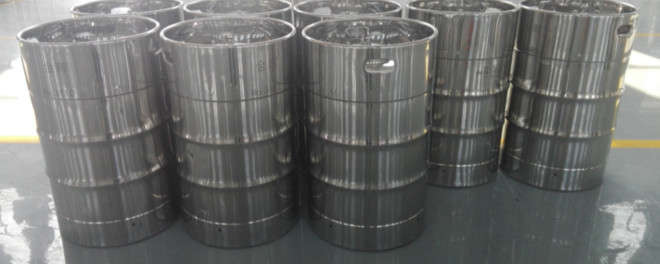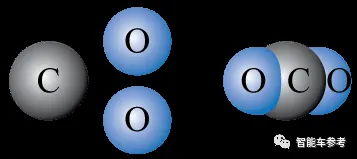
Lithium battery electrolyte is the carrier of ion transmission in the battery, generally composed of lithium salt and organic solvents. The electrolyte plays the role of ion conduction between positive and negative electrodes of lithium battery, which is the guarantee for lithium ion battery to obtain the advantages of high voltage and high specific energy. Electrolyte is generally made of high-purity organic solvents, electrolyte lithium salt, necessary additives and other raw materials, under certain conditions, according to a certain proportion of the preparation of the The
The
1. Vinyl carbonate (molecular formula: C3H4O3)
Transparent colorless liquid(>35℃), crystalline solid at room temperature. Boiling point: 248℃/760mmHg , 243-244℃/740mmHg; Flash point: 160℃; Density: 1.3218; Refractive index: 1.4158(50℃); Melting point: 35-38℃; It is a good solvent for polyacrylonitrile and polyvinyl chloride. It can be used as the extraction liquid on textile; it can also be directly used as the solvent for removing acidic gas and the additive of concrete; in medicine, it can be used as the component and raw material of pharmaceuticals; it can also be used as the stabilizer of plastic foaming agent and synthetic lubricant; in battery industry, it can be used as the excellent solvent of electrolyte of lithium battery.
2. Propylene carbonate (molecular formula: C4H6O3)
Colorless and odorless, or light yellow transparent liquid, soluble in water and carbon tetrachloride, miscible with ether, acetone, benzene, etc., is an excellent polar solvent. Mainly used in polymer operation, gas separation process and electrochemistry. Especially used to absorb natural gas, petrochemical plant ammonia raw materials of which carbon dioxide, but also can be used as plasticizers, spinning solvents, olefins and aromatics extractant.
3. Diethyl carbonate (molecular formula: C5H10O3)
Colorless liquid, slightly odor; vapor pressure 1.33kPa/23.8℃; flash point 25℃ (combustible liquid can volatilize into vapor and run into the air. Temperature rise, volatilization accelerated. When the volatile vapor and air mixture and the ignition source contact can flash sparks, this brief combustion process is called flash ignition, the lowest temperature at which flash ignition occurs is called the flash point. The lower the flash point, the greater the risk of fire). Melting point -43 ° C; Boiling point 125.8 ° C; Solubility: insoluble in water, miscible in alcohols, ketones, esters and other most organic solvents; Density: Relative Density (water = 1) 1.0; relative density (air = 1) 4.07; Stability: Stable; Hazardous Labeling 7 (flammable liquids); Main Uses: used as a solvent and used in organic synthesis
4. Dimethyl carbonate (molecular formula: C3H6O3)
Dimethyl carbonate (DMC) is a non-toxic, environmentally friendly and widely used chemical raw material. It is an important intermediate in organic synthesis, containing carbonyl, methyl and methoxy functional groups in the molecular structure, with a variety of reactive properties, and it is safe to use, convenient, less polluting and easy to transport in the production. Due to the low toxicity of dimethyl carbonate, it is a "green" chemical product with development prospect.
DMC has excellent solvency properties with a narrow range of melting and boiling points, high surface tension, low viscosity, small dielectric boundary electric constant, as well as high evaporation temperature and fast evaporation rate, so it can be used as a low-toxicity solvent in the coating industry and pharmaceutical industry. As can be seen from Table 1, DMC is not only less toxic, but also characterized by high flash point, low vapor pressure and high lower explosive limit in air, so it is a green solvent combining cleanliness and safety.
5. Methyl ethyl carbonate
Molecular weight: 104.1, density 1.00 g/cm3, colorless transparent liquid, boiling point 107℃, melting point -14℃, is a high-tech, high-value-added chemical products in recent years, an excellent solvent for lithium-ion battery electrolyte, is the latest product extended with the dimethyl carbonate and lithium-ion batteries production increase, because it has both methyl and ethyl, both dimethyl carbonate, Because it possesses both methyl and ethyl, and has the characteristics of dimethyl carbonate and diethyl carbonate, it is also a solvent for special flavors and intermediates. Due to the imbalance of methyl and ethyl, the product is unstable and not suitable for long-term storage.
6. Lithium hexafluorophosphate
White crystal or powder, relative density 1.50, strong deliquescence; soluble in water, also soluble in low concentrations of methanol, ethanol, acetone, carbonate and other organic solvents. Decompose when exposed to air or heated. When exposed to air or heated, lithium hexafluorophosphate decomposes rapidly in air due to the action of water vapor, releasing PF5 and producing white smoke.
7. Phosphorus pentafluoride
Phosphorus pentafluoride (chemical formula: PF5), is a phosphorus-halogen compound, the oxidation number of the phosphorus atom is +5, containing a three-center four-electron bond. Phosphorus pentafluoride is a colorless malodorous gas at room temperature and pressure, and it is a strong irritant to skin, eyes and mucous membranes. It is a very reactive compound and violently produces toxic and corrosive white fumes of hydrogen fluoride in humid air. Phosphorus pentafluoride is used as a catalyst in polymerization reactions.
8. Hydrofluoric acid
Colorless transparent fuming liquid. Aqueous solution of hydrogen fluoride gas. Weakly acidic. Pungent odor. Reacts with silicon and silicon compounds to form gaseous silicon tetrafluoride, but does not corrode plastics, paraffin, lead, gold, platinum. Miscible with water and ethanol. Relative density 1.298. 38.2% of hydrofluoric acid for the azeotropic mixture, azeotropic point 112.2 ℃. Toxic, minimum lethal dose (rat, intraperitoneal) 25mG/kG. corrosive, can strongly corrode metal, glass and objects containing silicon. Inhalation of vapors or contact with skin can form difficult to heal ulcers.
The main electrolytes used in lithium batteries are lithium perchlorate and lithium hexafluorophosphate. However, the low-temperature effect of the battery made of lithium perchlorate is not good, and there is a danger of explosion, while the battery made of fluorine-containing lithium salts has good performance, no danger of explosion, and strong applicability, especially the battery made of lithium hexafluorophosphate, in addition to the advantages mentioned above, the treatment of waste batteries in the future is relatively simple, and it is friendly to the eco-environment.
(Article source:(Network)
[___Zhongshun New Energy Technology Department November 6, 2021 Responsibility: Wen Gong]
* Reproduced for the purpose of transmitting more information, and does not mean that we endorse its views and are responsible for its authenticity.




